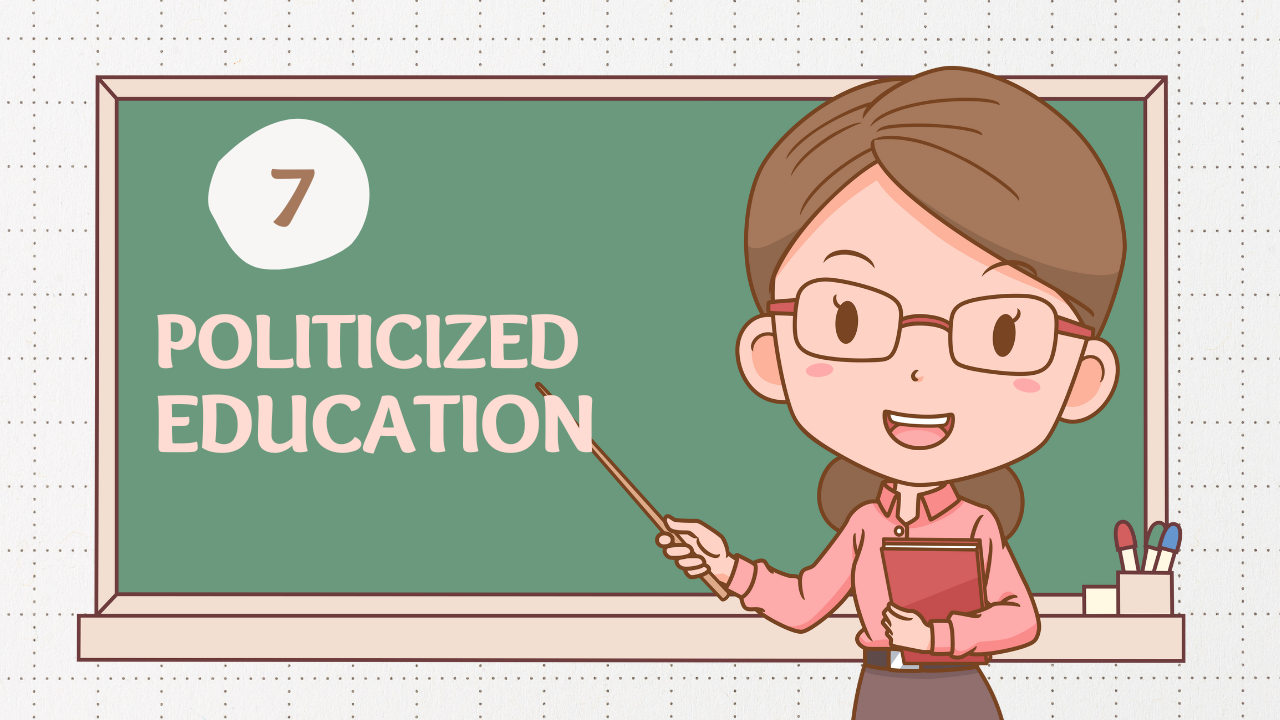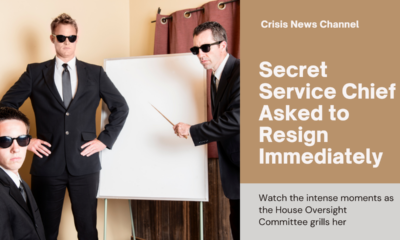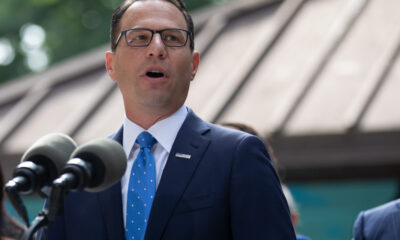Education
CHAPTER 7: Politicized Education Space Is No Longer the Final Frontier—Reality Is [upcoming release April 2024]
Education reform has always been dubious, because the goals of reformers were not to produce thinkers, Since the 1990s it’s worse.

Globalism is a replacement ideology that seeks to reorder the world into one singular, planetary Unistate, ruled by the globalist elite themselves. The globalist war on nation-states cannot succeed without collapsing the United States of America. The long-term strategic attack plan moves America incrementally from constitutional republic to socialism to globalism to feudalism. The tactical attack plan uses asymmetric psychological and informational warfare to destabilize Americans and drive society out of objective reality into the madness of subjective reality. America’s children are the primary target of the globalist predators.
Three pillars of freedom
The three pillars of faith, family, and flag were established as the infrastructure of freedom in the United States of America. Our Founding Fathers recognized the importance of an educated citizenry for sustaining ordered liberty in our constitutional republic. The infrastructure and moral tenets in American culture were derived from both the Bible and the Judeo-Christian tradition our Founding Fathers embraced.
Our Constitution was made only for a moral and religious People. It is wholly inadequate to the government of any other. John Adams to Massachusetts Militia, 11 October 1798
Our Founding Fathers recognized literacy as the cornerstone of critical thinking and the transfer of information. They knew that an educated, moral, responsible adult citizenry was necessary to sustain and grow our fledgling nation.
Every child in America should be acquainted with his own country. He should read books that furnish him with ideas that will be useful to him in life and practice. As soon as he opens his lips, he should rehearse the history of his own country. Noah Webster, On the Education of Youth in America, 1788
A Bible and a newspaper in every house, a good school in every district—all studied and appreciated as they merit—are the principal support of virtue, morality, and civil liberty. Benjamin Franklin, Christian Life and Character of the Civil Institutions of the United States (ed. 1864)
It is an object of vast magnitude that systems of education should be adopted and pursued which may not only diffuse a knowledge of the sciences but may implant in the minds of the American youth the principles of virtue and of liberty and inspire them with just and liberal ideas of government and with an inviolable attachment to their own country. Noah Webster, On the Education of Youth in America, 1788
Reading remains the most fundamental skill required to preserve and protect our constitutional republic. The enemies of freedom targeted American education tactically, to undermine literacy in order to achieve an unaware and compliant citizenry decades before that infamous phrase was associated with John Podesta and Hillary Clinton. Children were always the strategic target because they are the future of America.
The first education reformers – industrialists wanting workers, not thinkers
Industrialists John D. Rockefeller and Andrew Carnegie were major influences in the evolution of American education. Teachers College at Columbia University was endowed with $500,000 from the Rockefeller Foundation in 1902. In that same year John D. Rockefeller created the General Education Board (GEB) with a gift of $1 million. The GEB provided funding and influence to shape American schooling. Rockefeller is quoted as saying, “I don’t want a nation of thinkers; I want a nation of workers.” Education was being recalibrated to emphasize vocationalism, to produce future factory workers for industrialists’ needs. The GEB was subsumed by the Rockefeller Foundation in 1960.
The idea of mandatory education in the United States was embraced and promoted by steel magnate Andrew Carnegie. Carnegie advocated for a teacher certification system, and donated millions of dollars to establish libraries and universities across the country. The Carnegie Foundation for the Advancement of Teaching[1] (CFAT) was originally established as the Carnegie Foundation with a $10 million gift by Andrew Carnegie in 1905, “as an independent policy and research center called to ‘do and perform all things necessary to encourage, uphold, and dignify the profession of the teacher and the cause of higher education.’” (Carnegie Foundation History)
The Carnegie Foundation and the credit hour system
Since its inception, CFAT has had a powerful influence on American education, particularly in its efforts at quantifying and standardizing education. In 1906 it introduced the Carnegie Unit, a measurement of education credits required for high school curriculum and graduation requirements. The CFAT pension program, which became an independent nonprofit organization called Teachers Insurance and Annuity Association[ii] (TIAA) in 1914, was linked to participation in curriculums using the Carnegie Unit in high schools for graduation, and to colleges and universities for admission.
A 2015 CFAT study authored by Elena Silva, Taylor White, and Thomas Toch, “The Carnegie Unit: A Century-old Standard in a Changing Educational Landscape,”[iii] discusses the history and future of the Carnegie Unit. From the report:
The Carnegie Unit and the Credit Hour (p. 8)
The standard Carnegie Unit is defined as 120 hours of contact time with an instructor, which translates into one hour of instruction on a particular subject per day, five days a week, for twenty-four weeks annually. Most public high schools award credit based on this 120-hour standard (one credit for a course that lasts all year; or half a credit for a semester course). And, while state and district coursework requirements for graduation vary, most states require a minimum number of units, typically expressed as “Carnegie Units.” A typical high school student earns six to seven credits per year over a four-year program of high school.
In higher education, students receive “credit hours,” a metric derived from the Carnegie Unit and based on the number of “contact hours” students spend in class per week in a given semester. A typical three-credit course, for example, meets for three hours per week over a fifteen-week semester. A student, then, might earn fifteen credit hours per semester (fifteen is standard full-time registration for a semester, thirty for an academic year) en route to a four-year bachelor’s degree requiring a total of 120 credits.
Outcome-Based Education
The report recommended replacing the Carnegie Unit with a system of Outcome-Based Education (OBE). Popularized in the 1990s, OBE is an educational theory that rejects traditional content-based learning that emphasizes rote learning and acquisition of foundational knowledge, and bases the educational system instead on personal pre-determined goals called outcomes. It is the quintessential shift from the WHAT of education to the WHO.
Marketed as deeply personalized, empowering, and student-centric, OBE rejects traditional education as old-fashioned, limiting, and educator-centric. In OBE teachers are facilitators, not educators with authority or expertise. The student-centric focus is not on individual academic achievement, but rather on student social interactions and cooperativelearning experiences.
This seismic shift from traditional to outcome-based education marked the institutional shift of American education from the education our founders envisioned to social activism where outcomes, results, performances, competencies, and standards could all be evaluated with a politicized metric. Outcome-Based Education was the chosen vehicle for social change through education, which was now being used to emphasize political activism and produce anti-American Americans for globalists’ needs.
The 2015 study indicated that one of the biggest obstacles to shifting from the Carnegie Unit to Outcome-Based Education (OBE) was federal financing:
But efforts to further push the boundaries of the design and delivery of higher education face a substantial barrier: the federal government’s requirement that most students taking part in the $150 billion federal financial aid program attend colleges or universities using Carnegie Units. (“The Carnegie Unit,” p. 25)
The Obama administration was committed to OBE, so it proposed changes to the federal funding model that included other criteria besides the Carnegie Unit:
To promote competency models in higher education, the Obama administration has endorsed a provision in the federal financial aid regulations that extends eligibility under the program to students at institutions that use “projects, papers, examinations, presentations, performances, portfolios” and other “direct” measures of learning “in lieu of credit hours or clock hours” to gauge student performance. It initially extended “direct assessment” privileges to two institutions, Capella University, a for-profit online provider, and Southern New Hampshire University’s College for America. The University of Wisconsin’s Flexible Option, which is led by UW–Extension, received approval for direct assessment in August 2014. (“The Carnegie Unit,” p. 25)
Carnegie II
The Carnegie Foundation and the Carnegie Foundation for the Advancement of Teaching have politicized American education and abandoned their founding missions. The 2015 CFAT Executive Summary states unequivocally that the Carnegie Unit must be replaced in order to facilitate “solutions” sought by reformers. It is political reform disguised as educational reform:
The Carnegie Foundation is committed to making American education more effective, more equitable, and more efficient at this critical junction in the nation’s history. We share change advocates’ goals of bringing greater transparency and flexibility to the design and delivery of K–12 and higher education in pursuit of deeper learning for more students. After studying the Carnegie Unit’s relationship to today’s reforms, we have concluded that American education’s reliance on the Carnegie Unit is an impediment to some of the solutions sought by reformers. Most notably, the federal government’s financial aid rules requiring colleges and universities to measure student progress using Carnegie Units are a barrier to the spread of flexible delivery models in higher education. (“The Carnegie Unit,” p. 5)
Changing the metrics of education from the Carnegie Unit to OBE weaponized American education, transforming it from its colonial purpose of literacy and support of Americanism to being the political agent for massive social change.
CFAT’s current Mission Statement:[iv]
The mission of the Carnegie Foundation is to catalyze transformational change in education so that every student has the opportunity to live a healthy, dignified, and fulfilling life.
The Carnegie Foundation for the Advancement of Teaching was chartered by an act of Congress in 1906. Since then, it has pioneered a broad range of transformative advancements in K–12 and higher education, including the creation of the Carnegie Unit; TIAA; standards for schools of law, medicine, education, and engineering; Educational Testing Service; the GRE; Pell Grants; the Carnegie Classifications; the U.S. Department of Education; and the use of improvement science to build the field’s capacity to improve.
Today, the Carnegie Foundation has set its sights on tackling the nation’s most significant educational challenge: achieving educational equity for Black, Latinx, Indigenous, Asian and Pacific Islander, and first-generation students, as well as those from low-income households. Carnegie will leverage its expertise, assets, partnerships, convening power, and social and reputational capital to address longstanding educational inequities that impede economic mobility and exacerbate racial inequality.
Historically, public education supported upward mobility and the middle class through education focused on teaching basic skills and fundamental knowledge. The politicization of American education shifted the ideological focus from meritocracy’s equal opportunity to socialism’s equal outcome. It was a seismic shift in both form and content in American education.
We are feeling the aftershocks of this earthquake today. The introduction of racist Critical Race Theory, the staggering increase in functional illiteracy, the profoundly disturbing introduction of pornographic sex education—all are derivatives of the changed purpose of America’s education industry.
Journalist and educational reformer Alex Newman explores the subject in his September 13, 2023, article, “Lesbian-Marxist US Library Boss: School & Libraries for ‘Socialist Organizing’.”[v] Newman writes:
Government schools and local libraries should be used for “socialist organizing,” the self-proclaimed “Marxist lesbian” chief of the American Library Association (ALA) proclaimed at a major socialism conference last week. The library boss has also become notorious recently for hating on parents, families, Christians and anyone else who stands in the way of indoctrinating children.
Speaking after a panel at the Socialism 2023 conference in Chicago organized by a coalition of revolutionaries advocating for the “right” of children to engage in prostitution, among other absurdities, ALA chief Emily Drabinski did not hold back. “Public education needs to be a site of socialist organizing,” she told attendees…. Among other topics, the panel at which Drabinski spoke out included discussion on how teachers could indoctrinate children with Critical Race Theory propaganda, even in jurisdictions that have banned it. “We need to be on the agenda of socialist organizing,” added Drabinski…. The socialism event in Chicago, which featured the Democratic Socialists of America (DSA) as a supporter, featured panels on abolishing the family and replacing it with government, as well as “best practices for developing socialist programming for kids.”…
“Ms. Drabinski is a supporter of Critical Race Theory, which Montana rejected as discriminatory, and other far-left-leaning ideologies that have no place in our schools and libraries,” said Montana Superintendent of Public Instruction Elsie Arntzen. “By electing a declared Marxist as their President, the ALA has not only turned its back on families, parental rights, and American values—it has turned its back on America itself.”
Taxpayer funds are being weaponized to foment a revolution against the very taxpayers coerced into footing the bill for this dangerous extremism. It is time for all library systems to leave the ALA and for government schools turning children into Marxist revolutionaries to be shut down. The future of America is on the line.
Parents, get your children out!
Today’s American education industry is in direct opposition to our Founding Fathers, who understood that an educated citizenry is required for sustaining ordered liberty in our constitutional republic. The American education industry is now the instrument for anti-American propaganda and Marxist indoctrination. Parents can no longer trust their children’s education to it.
[1] Carnegie Foundation for the Advancement of Teaching
[ii] Teachers Insurance and Annuity Association
[iii] The Carnegie Unit: A Century-old Standard in a Changing Educational Landscape
[v] Lesbian-Marxist US Library Boss: School & Libraries for ‘Socialist Organizing’
From Pundicity.com; appears by arrangement – Ed.
Linda Goudsmit is the devoted wife of Rob and they are the parents of four children and the grandparents of four. She and Rob owned and operated a girls’ clothing store in Michigan for forty years before retiring to the sunny beaches of Florida. A graduate of the University of Michigan in Ann Arbor, Linda has a lifelong commitment to learning and is an avid reader and observer of life. She is the author of the philosophy book Dear America: Who’s Driving the Bus? and its political sequel, The Book of Humanitarian Hoaxes: Killing America with ‘Kindness’, along with numerous current affairs articles featured on her websites lindagoudsmit.com and goudsmit.pundicity.com. The Collapsing American Family: From Bonding to Bondage and her forthcoming book, Space Is No Longer the Final Frontier––Reality Is, complete Linda’s quadrangle of insightful books that connect the philosophical, ideological, political, and psychological dots of globalism's War on America and individual sovereignty.
Linda believes the future of our nation requires reviving individualism, restoring meritocracy, and teaching critical-thinking skills to children again. Her illustrated children’s book series, Mimi’s Strategy, offers youngsters new and exciting ways of solving their problems and having their needs met. Mrs. Goudsmit believes that learning to think strategically rather than reacting emotionally is a valuable skill that will empower any child throughout his or her life. Plus, in Linda’s words, “I have yet to meet the child who would prefer a reprimand to a kiss.”
-

 Executive4 days ago
Executive4 days agoSecret Service chief gets no solace
-

 Executive3 days ago
Executive3 days agoWaste of the Day: Louisville Taxpayers Pay Nearly $600,000 For Empty Building’s Maintenance, Security
-

 Guest Columns5 days ago
Guest Columns5 days agoFear Itself: Democrats’ Favorite Strategy Caused Their Current Chaos
-

 Executive3 days ago
Executive3 days agoWhere is Joe Biden – or Jill?
-

 Executive2 days ago
Executive2 days agoWaste of the Day: Throwback Thursday: Cities Used Crime Prevention Funds on Soccer Games, Paper Shredding
-

 Executive2 days ago
Executive2 days agoFacile and politically motivated suggestions
-

 Civilization5 days ago
Civilization5 days agoBuild Iron Dome in the United States To Prepare for Israel’s Worst Day
-

 Executive2 days ago
Executive2 days agoBiden makes farewell whisper














